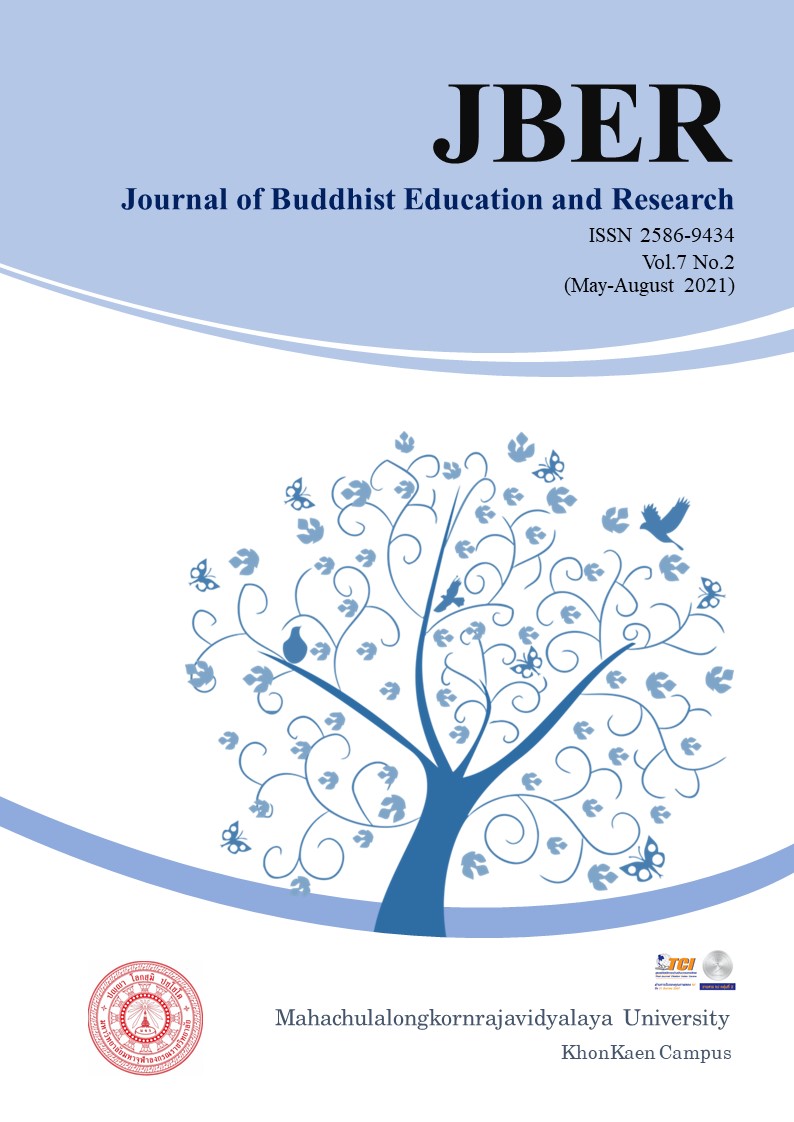A CONCEPTUAL THOUGHT ON ETHNICITY STRATIFICATION OF THE TRADITIONAL THAI DIALECT SONGS
Keywords:
Traditional Thai dialect songs; Social stratification; EthnicityAbstract
This article entitled ‘A Conceptual Thought on Ethnicity Stratification of the Traditional Thai Dialect Songs’ is the fractional part of the research: A Study on Ethnicity Conceptualization in the Traditional Thai Dialect Songs. On the matters of multi-ethnicities existence of the traditional Thai musical pieces (the Thai dialect songs consist of 12 imitated ethnic styles, i.e., Keak, Burmese, Mon, Loas, Chinese, Farang (Western), Khmer, Vietnamese, Japanese, Khamu, Ngeow, Talung) are concerned as a structure of ethnicity identification appearance through the traditional Thai music dimension. The objectives of the study aimed to i. Study and allocate musical spheres which are relevant to music roles in use and ii. Analyze status and social stratification on the ethnicity concept of Traditional Thai music. A musical form and analysis as well as social stratification were applied for data analysis and a qualitative method was employed for research methodology. This research study is an integral method of musicological and anthropological approaches. The results of the study revealed that: i. the structural role of traditional Thai dialect songs were divided into main 5 sectors namely 1) the musical form sector 2) the traditional Thai dialect songs and Thai music genres sector 3) the traditional Thai dialect songs and roles of functional use sector 4) the traditional Thai dialect songs and Thai music ensembles sector and 5) the traditional Thai dialect songs and linguistic lyrics sector and ii. the status and social stratification on ethnicity concept of Traditional Thai music, it was concluded that: the phenomena of the traditional Thai dialect songs is a consequence of the ‘Cultural Expression’ which stands on a concept of social stratification as 3 classes - i.e., upper class, middle class, and lower class.
References
ขจร สุขพานิช. (2560). ออกญาวิไชเยนทร์ (พิมพ์ครั้งที่ 2). นนทบุรี: ศรีปัญญา.
นิติ ภวัครพันธุ์. (2558). ชวนถก ชาติและชาติพันธุ์. กรุงเทพฯ: ศยาม
ราชบัณฑิตยสถาน. (2540). สารานุกรมศัพท์ดนตรีไทย ภาคคีตะ-ดุริยางค์. กรุงเทพฯ: มหาจุฬาลงกรณ์ราชวิทยาลัย.
สุจิตต์ วงษ์เทศ. (2556). สิบสองภาษา สำเนียงเพื่อนบ้าน [เอกสารประกอบการบรรยายพิเศษ]. ปทุมธานี: คณะสังคมวิทยาและมานุษยวิทยา มหาวิทยาลัยธรรมศาสตร์ รังสิต.
_________. (2561, 31 สิงหาคม - 6 กันยายน). เพลงสิบสองภาษา ดนตรีไทยแบบฉบับ. มติชนสุดสัปดาห์.
Ashcroft, B., Griffiths, G., & Tiffin, H. (2007). Post-colonial studies the key concepts (2nd ed.). New York, NY: Routledge.
Eriksen, T.H. (2010). Ethnicity and nationalism (3rd ed.). London: Pluto Press.
Young, R. J.C. (1995). Colonial desire hybridity in theory, culture and race. London: Routledge.





